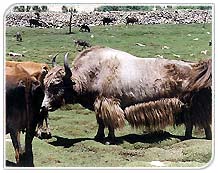Ladakh Travel Guide
---------------------------------------------------------------------------------------------------------------------------------------------------------------------------------------------------------------------------------
Ladakh Home » About Ladakh Travel Guide » Religion & Culture » Historical Background » Ancient Routes » Modern Routes
Central Ladakh » Fairs & Festivals » Oracles & Astrologers » Arts & Crafts » Cultural Tourism » Archery & Polo » Adventure in Ladakh
The New Areas » Tourist Information » Air Line Ticketing » Car Coach Rentals In Ladakh
Travel Agents & Tour Operators in Ladakh » Hotels & Resorts in Ladakh » Map »Travellers Tools
---------------------------------------------------------------------------------------------------------------------------------------------------------------------------------------------------------------------------------
Ladakh Home » About Ladakh Travel Guide » Religion & Culture » Historical Background » Ancient Routes » Modern Routes
Central Ladakh » Fairs & Festivals » Oracles & Astrologers » Arts & Crafts » Cultural Tourism » Archery & Polo » Adventure in Ladakh
The New Areas » Tourist Information » Air Line Ticketing » Car Coach Rentals In Ladakh
Travel Agents & Tour Operators in Ladakh » Hotels & Resorts in Ladakh » Map »Travellers Tools
---------------------------------------------------------------------------------------------------------------------------------------------------------------------------------------------------------------------------------
The New Areas
Tso-Moriri Lake Circuit
Leh - Upshi - debring - Puga- Tso- moriri - Korzok and return

Leh - Upshi - Chumathang- Mahe- Puga- Tso-moriri- Korzok and return.
The area traversed by the Manali leh road, and containing the drainage basins of Tso-moriri and other lakes is known as Rupshu. Here, the Zanskar range is transformed into bare rolling many-hued hills divided by open high altitude valley scoured by dust-devils. It is a landscape unlike any other in Ladakh -or elsewhere in India.
The first circuit follows the Manali road over the Taglang-la as far as Debring, a Chang-pa camping place. From here it strikes off east on a rough traks across the basin of the twin lakes Startsapuk-Tso (Fresh water) and the Polokangka-la (about 16,500 feet/ 5,030m) to Sumdo in the Puga valley - near the site of old sulphur mines, then over a roller-coaster track to the head of the Tso-moriri, and on to Korzok, a quarter of the way along the lake's 20 km length.
The alternative route, instead of leaving the Indus at Upshi, carries on up the river, as it snakes its way through a gorge between the Ladakh and Zanskar ranges, to the village of Chumathang, where there is a hot spring. At Mahe, some 17 km further, the road crosses from the north to the south bank of the river by bridge; it then follows the Puga stream up to join the first circuit at Sumdo.
Korzok, situated at 15,000 feet (4,572 m) with its dozen or so houses and its gompa appearing like a mirage among the barren hills, is the only permanent settlement in Rupshu; otherwise the region is inhabited only by nomadic Chang-pa herdspeople. The Rupshu Chang-pa live in tents all the year round, moving in accordance with an old-established annual routine between the pastures the exist wherever an occasional stream carrying snowmelt from the heights makes possible the growth of grass, scanty indeed, but reportedly highly nutritious. The few barley-fields at Korzok must be among the highest cultivation in the world, but there is no guarantee that the crop will ripen every year.
Even Rupshu's bare hills support a sparse population of wildlife, and the animal most likely to be spotted is the Kyang, the wild ass of the Ladakh and Tibet plateaux. More plentiful are marmots (ubiquitous on mountain slopes all over Ladakh), hares, and an unusual tail-less rat. The lakes are breeding-grounds for numerous species of birds. Chief among them are the barheaded goose, found in great numbers on the Tso-moriri, the great crested grebe, the Brahmini duck (ruddy sheldrake) and the brown-headed gull.
Ladakh Home »
About Ladakh Travel
Guide » Religion
& Culture » Historical
Background » Ancient
Routes » Modern
Routes
Central Ladakh » Fairs & Festivals » Oracles & Astrologers » Arts & Crafts » Cultural Tourism » Archery & Polo » Adventure in Ladakh
The New Areas » Tourist Information » Air Line Ticketing » Car Coach Rentals In Ladakh
Travel Agents & Tour Operators in Ladakh » Hotels & Resorts in Ladakh » Map »Travellers Tools
Central Ladakh » Fairs & Festivals » Oracles & Astrologers » Arts & Crafts » Cultural Tourism » Archery & Polo » Adventure in Ladakh
The New Areas » Tourist Information » Air Line Ticketing » Car Coach Rentals In Ladakh
Travel Agents & Tour Operators in Ladakh » Hotels & Resorts in Ladakh » Map »Travellers Tools